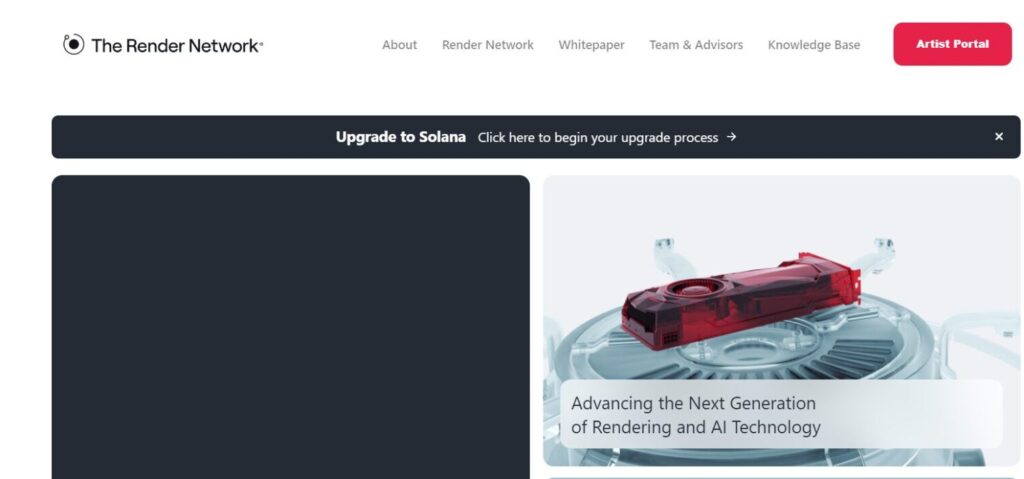AI crypto projects are initiatives that leverage artificial intelligence (AI) technology to enhance various aspects of the cryptocurrency ecosystem, including trading, investment, blockchain development, and data analysis. These projects aim to harness the power of AI algorithms and machine learning techniques to solve complex problems, improve efficiency, and unlock new opportunities in the crypto space.
So, let’s break it down.
Imagine if you have a robot that can think and learn by itself, like a super-smart friend who knows a lot about money and computers. Now, imagine this robot is helping out in the world of digital money, where people buy and sell things using something called cryptocurrency, which is like money but it only exists on computers.
So, AI crypto projects are basically initiatives where people use these smart robots, or artificial intelligence (AI), to do cool stuff in the world of cryptocurrency. These projects use AI to solve tricky problems, make things work better, and find new ways for people to use digital money. It’s like having a team of super-smart helpers who are experts in both technology and money stuff.

For example, some AI crypto projects help traders make better decisions about when to buy or sell cryptocurrency. Others focus on keeping people’s digital money safe and private. Overall, AI crypto projects are like having a bunch of clever friends who use their smarts to make the world of digital money even more awesome and exciting!
Table of Contents
What are AI crypto projects?
AI crypto projects are efforts that use artificial intelligence (AI) technologies to tackle various challenges and explore opportunities within the cryptocurrency sector. These projects employ AI algorithms and machine learning techniques to scrutinize data, predict market trends, boost security, automate trading, and craft inventive applications for cryptocurrencies.
How do AI crypto projects benefit the cryptocurrency industry?
AI crypto projects furnish several advantages to the cryptocurrency sphere. They assist traders and investors in making more informed decisions by furnishing data-driven insights and predictive analytics. These projects enhance security protocols by spotting fraudulent activities, pinpointing vulnerabilities, and refining encryption methodologies. Moreover, AI crypto projects fuel innovation by delving into novel applications for cryptocurrencies and blockchain technology, such as decentralized finance (DeFi), non-fungible tokens (NFTs), and smart contracts.
What are some examples of AI crypto projects?
Some instances of AI crypto projects encompass trading bots that automate buying and selling decisions grounded on market analyses, sentiment analysis tools that gauge investor sentiments and social media trends, blockchain analytics platforms that monitor cryptocurrency transactions and detect suspicious activities, and decentralized prediction markets that utilize AI to prognosticate future events and outcomes. Additionally, AI crypto projects may involve research and development endeavors aimed at enhancing blockchain scalability, interoperability, and privacy features.
Are AI crypto projects safe?
The safety of AI crypto projects hinges on various factors, including the dependability of the underlying AI algorithms, the integrity of the data sources employed for analysis, and the security measures implemented by project developers. Although AI technologies can fortify security and mitigate risks in certain instances, they might also introduce new vulnerabilities and challenges. Consequently, it’s imperative for users to exercise caution, conduct comprehensive research, and adhere to best practices when engaging with AI crypto projects.
Can anyone participate in AI crypto projects?
Yes, individuals with an interest in AI and cryptocurrency technology can partake in AI crypto projects. Depending on the project’s objectives and requisites, participants may encompass developers, data scientists, traders, investors, researchers, and enthusiasts from diverse backgrounds. Certain AI crypto projects may proffer opportunities for collaboration, contribution, or investment, while others may furnish educational resources, tools, and platforms for experimentation and innovation.
Also Read ➤ ➤ How to buy Amazon products using Cryptocurrency | STAND OUT!
The Main Agenda – Best AI Crypto Projects
Chainlink (LINK)

Chainlink (LINK) is a blockchain-based project aimed at bridging the gap between smart contracts on the blockchain and real-world data. It functions as a decentralized oracle network, allowing smart contracts to securely interact with external data sources, APIs, and payment systems. Essentially, Chainlink enables smart contracts to be more versatile and applicable to a wide range of real-world use cases, from decentralized finance (DeFi) to supply chain management and beyond.
A unique aspect of Chainlink is its decentralized nature, which ensures reliability and tamper resistance in data feeds. Its use of multiple independent oracles helps mitigate the risk of single points of failure or manipulation. Chainlink’s ability to provide accurate and timely data to smart contracts enhances the efficiency and trustworthiness of decentralized applications.
However, one potential downside is the reliance on external data sources, which could introduce vulnerabilities if those sources are compromised or inaccurate. Additionally, as with any blockchain project, scalability and adoption remain ongoing challenges for Chainlink’s widespread implementation.
Also Read ➤ ➤ Common Crypto Questions
The Graph (GRT)

The Graph (GRT) is a decentralized protocol for indexing and querying data from blockchain networks, making it easier for developers to access and retrieve blockchain data efficiently. By providing a decentralized infrastructure for organizing and accessing blockchain data, The Graph enables developers to build more robust and scalable decentralized applications (dApps). Its architecture allows for the creation of subgraphs, which are customizable data indexes tailored to specific use cases or applications.
One of the unique features of The Graph is its focus on developer-friendliness, offering easy-to-use tools and APIs for indexing and querying blockchain data. This accessibility encourages innovation and the development of a diverse ecosystem of dApps.
However, challenges such as scalability and network congestion may arise as the demand for indexing and querying services increases. Additionally, The Graph’s reliance on decentralized nodes for indexing and querying introduces potential issues related to node reliability and data availability.
Theta Network (THETA)

Theta Network (THETA) is a blockchain-based project focused on revolutionizing the video streaming industry by decentralizing content delivery through peer-to-peer technology. It aims to improve video streaming quality, reduce costs, and provide incentives for users to share their bandwidth and computing resources. Theta Network introduces a novel approach called “proof-of-engagement” to reward users for participating in the network, such as by watching and sharing video content or caching and relaying video streams to other users.
One notable aspect of Theta Network is its use of a dual-token system, with THETA and TFUEL serving distinct purposes within the ecosystem. THETA is the governance and staking token, while TFUEL is used as the utility token for on-chain operations like payments and rewards.
This dual-token model helps to incentivize network participation and ensures the efficient operation of the Theta Network. However, challenges related to content licensing, adoption by mainstream content providers, and scalability may hinder Theta Network’s widespread adoption and impact on the video streaming industry.
Also Read ➤ ➤ 10 Best Books on Crypto | Free Download Links
Render Token (RNDR)

Render Token (RNDR) is a blockchain project focused on democratizing access to high-performance computing resources for rendering complex graphics and simulations. It aims to create a decentralized network of rendering nodes where users can access computing power on-demand, paying for services using Render Tokens (RNDR). By leveraging blockchain technology and distributed computing, Render Token seeks to make rendering more affordable, accessible, and efficient for content creators across various industries, including film, gaming, and virtual reality.
One unique aspect of Render Token is its focus on leveraging underutilized computing resources to provide rendering services, potentially reducing costs and environmental impact compared to traditional rendering farms.
Additionally, Render Token’s integration with leading 3D software platforms and partnerships with industry players enhance its usability and appeal to content creators. However, challenges such as network scalability, security, and competition from centralized rendering services may impact Render Token’s long-term viability and adoption. Continued development and community support will be crucial for Render Token to realize its vision of democratizing rendering services worldwide.
Filecoin (FIL)

Filecoin (FIL) is a decentralized storage network designed to enable users to store and retrieve data in a secure, efficient, and censorship-resistant manner. It leverages blockchain technology to create a decentralized marketplace for storage providers and clients, where users can rent out their unused storage space and earn FIL tokens in return. Filecoin aims to address the growing demand for decentralized and verifiable storage solutions, particularly in sectors such as cloud computing, data storage, and content delivery.
One notable feature of Filecoin is its use of cryptographic proofs, such as proof-of-replication and proof-of-spacetime, to ensure the integrity and reliability of stored data. These cryptographic proofs provide guarantees that data is stored as claimed by storage providers, enhancing the trustworthiness of the network.
Additionally, Filecoin’s decentralized marketplace allows for competitive pricing and redundancy options, enabling users to choose storage solutions that best fit their needs and budget. However, challenges such as network scalability, storage provider reliability, and user adoption may affect Filecoin’s ability to achieve widespread adoption and disrupt the centralized storage market. Continued development efforts and ecosystem growth will be essential for Filecoin to realize its vision of a decentralized storage infrastructure for the internet.
Also Read ➤ ➤ Best 10 FREE Transcription Tools – The Ultimate Guide!
Conclusion
In conclusion, AI crypto projects represent a dynamic intersection of artificial intelligence and cryptocurrency, offering innovative solutions to various challenges within the digital asset ecosystem. These projects leverage AI algorithms and machine learning techniques to enhance trading strategies, improve blockchain functionality, revolutionize industries like video streaming and rendering, and redefine data storage practices. From Chainlink’s decentralized oracle network to Filecoin’s decentralized storage marketplace, each project brings unique features and benefits to the table, albeit with its own set of challenges and considerations.
While AI crypto projects hold immense potential for driving efficiency, security, and innovation in the cryptocurrency space, they also require careful scrutiny and ongoing development to address issues such as scalability, reliability, and adoption.
As the landscape continues to evolve, collaboration between developers, researchers, investors, and enthusiasts will be essential for realizing the full potential of AI crypto projects and unlocking new opportunities for decentralized finance, data management, and beyond. Overall, these projects represent an exciting frontier in the ongoing evolution of both artificial intelligence and cryptocurrency technologies, promising to reshape the future of digital assets and decentralized applications in profound ways.










